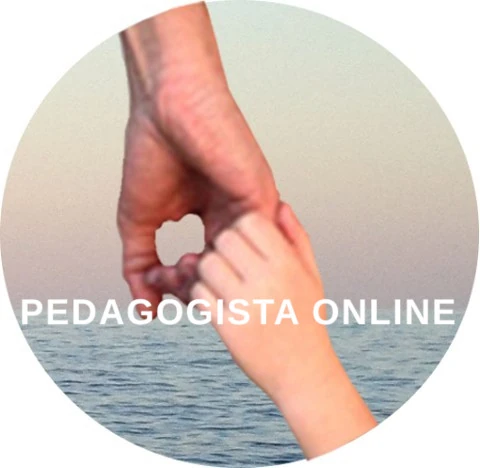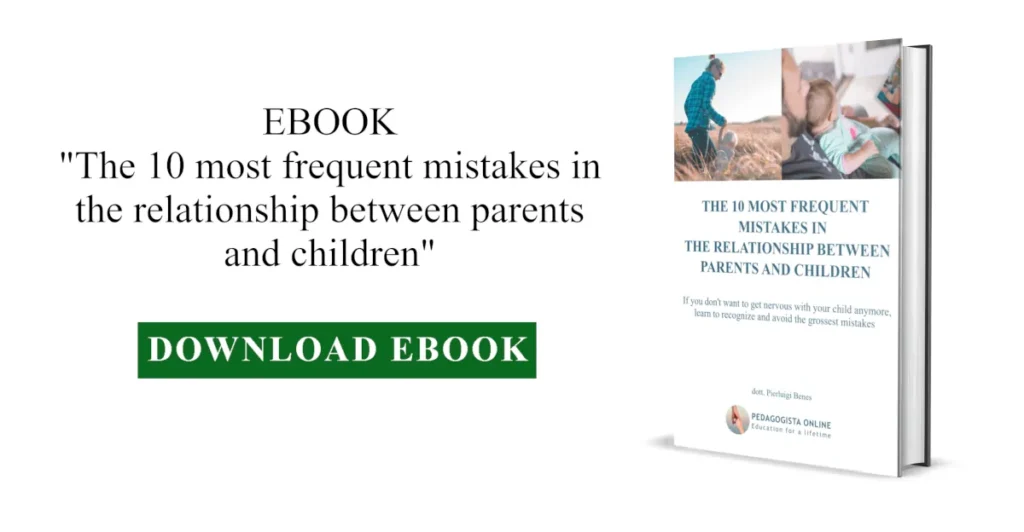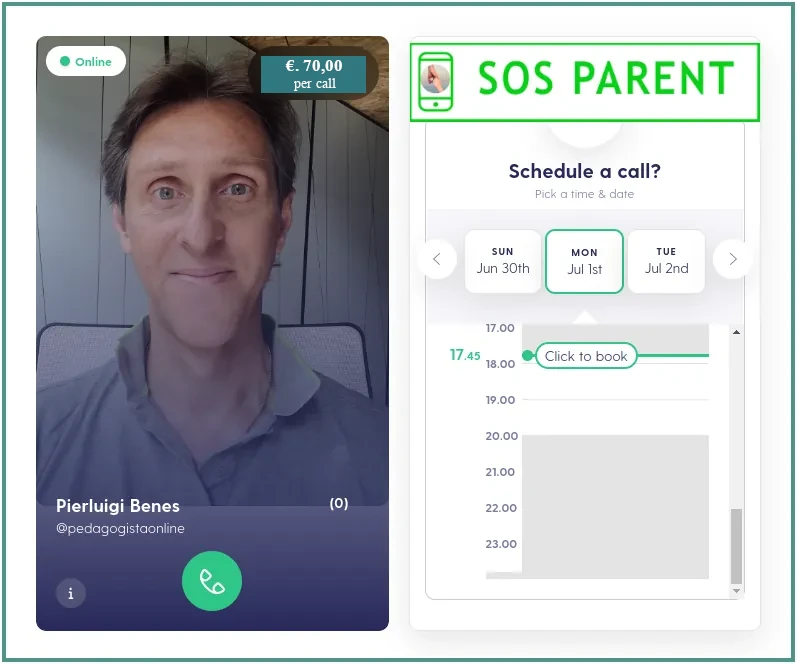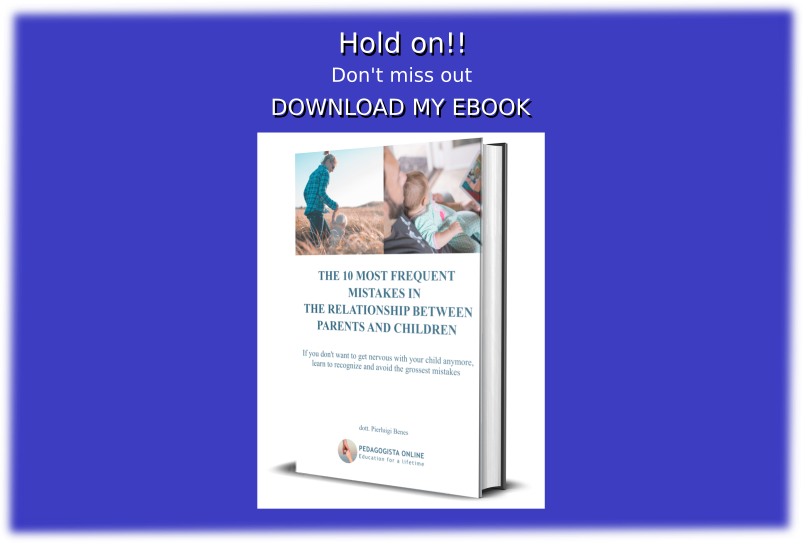
Marco is a very affectionate parent to his son and tries to do his best to meet his needs. However, he has realized that in many situations he has big doubts, to which he can’t easily find satisfying answers. Before his son’s birth, he was very confident about how he would take on his educational role, but then he realized that many things were different from what he expected. For example, he and his wife have very different attitudes towards their son. He manages him more distantly, while she is very present in all of their son’s experiences. Secondly, he and his wife have very different personalities, as he is a bit more closed while she is more outgoing.
These differences emerge in many of their family experiences and, in some cases, are also a source of conflicts, both between partners and between them and their son. Therefore, mothers and fathers often wonder what exactly the role of parents is today and how it can be approached in the most effective way possible to promote their child’s growth. In addition, many also ask themselves other questions: how to balance contact and distance towards their child? When to be firm or soft with children? … If you too are experiencing a similar situation and in various circumstances you don’t know how to exercise the role of parent with your child and how to work in synergy with your partner, I suggest you keep reading this post, which explains the educational role of parents and its importance.
In fact, I will provide you with precise indications on this and also concrete examples on the best way to do it in the different stages of the child’s development, so that you and your family can feel like a cohesive crew in facing the sea of education.
1. Parenting role: what does it entail
Parenting role is exercised in relation to different responsibilities and tasks, which require the development of appropriate parenting skills.
To understand exactly what this role entails, it is sufficient to pay attention to what the Italian Constitution provides, which specifies that it is the duty and right of parents to maintain, instruct, and educate their children.
From a pedagogical point of view, we can say that these are three aspects that are perfectly linked together because they faithfully reflect the three stages of education:
- do it for them (maintain): this is the phase in which the child does not have the means to stand on their own and is fully accompanied by the parent;
- do it with them (instruct): this is the phase in which the child is provided with means or taught to use new tools at their disposal, and they learn to use them;
- observe while they do (educate): this is the goal of education, namely to make one’s role irrelevant to the child because they have acquired sufficient familiarity with using their own means and only need stimuli to further grow.
Another important aspect concerns the duty of parents to assume this role, but also their right to exercise it; parental responsibilities derive from this, and therefore the need to understand how to fulfill them to the best of their ability.
Among the responsibilities is the maintenance of children; a first consideration that can be made here is that putting one’s child in a position to secure a valid and well-paid job is a condition that allows one to fulfill their responsibility. Therefore, allowing one’s child to achieve good personal maturity, to progress in their studies, and to find a job represent important steps in a person’s education.
A good educational path leads precisely to this, so it is very useful for you to understand how to undertake it. Therefore, to explain the role of parents, it is first necessary to clarify what education is.
In short, education is the assistance in the development of an individual’s personality; we mean development in a broad sense, as personal, human, formative or professional growth.
Consequently, from an educational point of view, the role of parents consists of accompanying the child through the path of growth, in order to make them independent and allow them to realize their own life project.
2. Parenting role: how to exercise it
In a moment, I’ll explain how to handle this role in the different stages of your child’s development. However, it’s important that you reflect on some crucial aspects first, because then I’ll show you how they’ll be useful to understand how to behave in front of daily choices:
– Parity: parent and child have equal dignity, meaning they both deserve to have their person respected. Someone may think of it like a banal consideration, but it’s not at all, and I’ll explain why.
I won’t go into the merits of the most heinous cases that are reported in the news, where dignity is brutally trampled. I simply notice a tendency to consider the child as having fewer rights than the adult, which is often widespread; and in education, it’s necessary to fully respect the child in order to help them grow.
To better explain, I’ll give the example of those who believe that it’s possible to hit a child or raise hands against them to educate. I could then add many other situations where this principle is violated; for example, considering a child as a package to move from one place to another (from their home to school, from there to sports, then to grandparents, then with the babysitter…) doesn’t take into account their needs and is detrimental to their dignity.
That’s why reflection on the centrality of the child must always be made in education, because every family choice that involves a child to some extent must be carefully considered for its effects on them and prepared with all necessary precautions.
– Asymmetry: if on one hand parent and child have equal dignity, on the other hand, one must not forget that there is an asymmetry of responsibility between them. Educational responsibility towards a child belongs to the parent, and this implies a series of effects that must be taken into account.
For example, many parents tend to relate to their children on a completely equal level; they treat them as friends, as if they were adults, even if they are 5-10-15 years old.
It’s true that the more the parent-child relationship is serene and relaxed, the more the child gains confidence and self-esteem; however, the parental role implies choices that cannot be made by the child. They can be involved, and this must be done in many situations; but it must be clear that the responsibility for that choice falls on the parents and they exercise it freely.
To better understand this aspect, just think about how to react to a child’s insistent request for a new toy seen at the store. If the purchase is not possible, the parent must feel fully authorized not to do it.
– Uniformity: the decisions of the parents should always be fairly shared, or at least made with a certain uniformity of views on the most important aspects of the child’s life. When this doesn’t happen, children experiences conflict, because they are called to decide whether to trust one parent’s choice or, on the contrary, that of the other.
This inevitably creates a deep discomfort in the child if it happens frequently, as the points of reference they rely on are lost; in essence, they are implicitly required to find security and comfort within themselves as an adult would, even though they are still children.
For this reason, sharing choices regarding children is one of the most delicate areas that parents are called upon to face. The difficulty is even more significant if the couple separates, but it’s still a test to be faced with the best intentions.
It must be guaranteed in every delicate situation, and this requires a habit of dialogue and confrontation that are the basic ingredients to effectively reach a common decision.
Anyway, there’s no need to panic; it’s a much simpler than it seems. In fact, the most basic strategy to achieve this goal is to choose as many solutions as possible without any winners or losers.
This strategy, which is a must in all peace keeping missions, easily achieves an important result in human relationships: it instills in the other person’s mind the principle that we do not want to dominate them in any way.
The more a strategy like this is manifested in family life, showing that we care about the other person’s point of view and needs, the less the other person will feel threatened. Therefore, it is very important to keep in mind that the best solution to a problem is not necessarily the one that fully resolves it, but the one that allows all participants to see their own point of view recognized.
Therefore, making a decision regarding one’s own children that solves a problem 60% but takes into account both partners’ contributions can be much more effective for the child and the couple than fully solving the problem at the expense of one person.
These three elements represent the core of any strategy that allows increasing peace in the family, which is one of the most effective means of promoting a child’s self-determination. Now that you have understood the role of parents, we can see how to educate a child and exercise our role in the different stages of development.
3. Early childhood and parenting role
Early childhood is the phase of a child’s development that takes place between 0 and 3 years of age. It is a very important time for the development of a person’s key abilities, and it is a time when education can be carried out according to specific dynamics.
In addition to the guidelines you will find in this blog on this topic, I now want you to reflect on how you can exercise your parenting role, while fully respecting the three criteria that I explained to you before (P.A.U.).
– Parity: as demanding as a children can be, it is important to show the utmost respect for their person; this means that it is necessary to know their delicate rhythms in order to accommodate them in the best possible way. The children have the right to sleep and eat according to their needs, but also the right to receive care from their parents, stimuli to get to know the world they live in, and the right to have their growth needs met.
Sometimes, a child’s tantrums can be a very challenging obstacle for some parents to overcome, because it is not easy to understand whether the reason for a behavior is a real need or rather an excessive demand.
Nevertheless, the habit of dialogue with the child allows parents to discriminate very well between the two, in order to find a good compromise and live the relationship with the child peacefully.
– Asymmetry: when faced with a tantrum, there are many ways to react: there are those who immediately give in and accept every request from their child, those who categorically refuse their child’s requests, and those who instead seek a middle ground.
In this third hypothesis, definitely the most congenial to parental responsibilities, the effectiveness of one’s choice derives above all from the serenity with which the parent manages to reason without being conditioned by the child’s pressing demands.
In other words, an effective parent is able to live the asymmetry of their role compared to the child, with considerable naturalness.
– Unanimity: if the way of reacting to a child’s tantrums is so different between parents, because one always gives in and the other never does, it is very likely that the child will get used to exploiting this crack to their advantage. The result, however, is that a vicious circle can be triggered, which makes it increasingly complicated to meet the child’s needs.
4. Middle childhood and parenting role
The second or middle childhood is notoriously the stage of a child’s development that takes place between the ages of 3 and 6. It is a time when more complex skills, such as speaking, running, jumping, playing more complex games, etc., become very evident in the child, and when education must adapt as best as possible to these needs. Now let’s see how you can exercise your role as a parent during this phase, while fully respecting the three criteria that I have explained to you (P.A.U.).
– Parity: the utmost respect for the child involves paying close attention to the curiosity they express during this phase. It is a time when the child asks many questions, because they are more capable than before of questioning the experiences they have. The child has the right to have their curiosities satisfied, so it is important to always try to answer their many “why”, as much as possible. In some cases, it can certainly be burdensome and perhaps not easy to answer their questions, but nothing prevents you from doing so at another time, showing that you are still attentive to a need.
– Asymmetry: at this stage, many children can express remarkable abilities; for example, they may be able to read very early, or they may have a very rich linguistic vocabulary and use it with great skill. Sometimes they can feel very strong because of this ability, as they receive a lot of praise from their family, and this can cause roles between parents and children to even be reversed. In fact, it happens that during an adult conversation, some children interrupt continuously to participate in the conversation as if they were much older than they are. Although it is correct to value the child’s abilities, it is important that it is always clear who is responsible at any given moment for setting the pace of the experiences they have. For example, if there is no time to expand the discussion, a parent should feel free to stop the child and continue the conversation with the other adult.
– Unanimity: during this period, substantial differences in the way of managing the child between parents may emerge, since the behaviors of a child in this age group are very expressive and often elicit an explicit reaction from the other person.
For example, one of the parents may be more inclined to indulge the child’s frenzy, while the other is more gentle. However, this is not a problem, because the child knows that one parent is different from the other and each has their own characteristics; therefore, it is correct that each person behaves in the way that comes most naturally to them. The difficulty arises if there are frequent divergences in allowing the child to have the same experience or not. If one parent says not to play and the other allows it, then this creates a conflict that the child must try to resolve, even though it may be impossible to do so.
5. Late childhood and parenting role
The third or late childhood is the developmental phase that occurs from around 6 to 9/10 years old. It is the period during which some of a person’s most refined abilities, such as reading, writing, and math skills, are consolidated, and education should be appropriately contextualized around these needs.
Now let’s see how you can exercise your role as a parent during this phase, while fully respecting the three criteria that I explained (P.A.U.).
– Parity: The child’s dignity should be preserved in every setting, whether at home, school, sports, or elsewhere. During the school years, it is possible that the child may still exhibit some immaturity or difficulty in studying. However, this should not diminish the respect that should be given to the child, who should not feel judged for any difficulty he or she may be experiencing.
Unfortunately, it is a widespread phenomenon to identify children who may have learning difficulties and steer them towards help programs. This is an extremely positive aspect in itself, but often leads to a strong stigmatization of difficulties, which makes the child feel different from others. When this happens, the child’s dignity is undermined, so it is essential to provide every possible protection at this stage so that difficulties can be effectively managed without compromising the self-image that the child is constructing.
– Asymmetry: When situations like this occur, stigmatizing diversity, there is a risk that the asymmetry between parent and child will be pushed beyond any reasonable limit. This could have the effect of infantilizing the child, always treating him or her as a “little” person who is not capable, because he or she does not express the same abilities as his or her peers. The responsibility of the parent is to seek ways to smooth out differences as much as possible, involving all the other adults who make up the child’s living environment, first and foremost, the school.
– Unanimity: In the face of the pressures that the family of a child with learning difficulties may be subjected to, it is essential that the synergy between the parents on the path to be taken is very strong. This is a very delicate issue because, for example, learning disabilities are a very controversial and debated topic. It is precisely for this reason that parents can find the strength to be united, because many inconsistencies and the haste with which difficulties in the child are sometimes raised provide an opportunity to reflect calmly, together. The problem will not be resolved 100% immediately, but perhaps a good solution that is shared by both parents will be found: taking time before certification; seeking other teachers, changing schools, etc.
6. Pre-adolescence and parenting role
Pre-adolescence is the developmental phase that typically occurs from around 9/10 to 11/12 years of age, with significant fluctuations between females and males. During this phase, there are important physical and psychological changes related to psychosexual development that require education to align with specific needs.
Now let’s see how you can exercise your role as a parent during this phase, in full respect of the three criteria I have explained (P.A.U.).
– Parity: this phase involves a strong curiosity towards the changes that children are going through, and in many cases, also some apprehension. This need must be recognized and addressed, giving the child the opportunity to develop maximum respect for themselves and their body. Neglecting these needs and thinking that someone else will take care of them does not respect the dignity of the child, as they may feel uncomfortable having to face these changes alone. School certainly plays an important role in educating children, but it may not have the same precision in understanding a child’s developmental state as the family does, and therefore its intervention may be less timely and effective than what parents can do.
– Asymmetry: the sudden mood changes in children of this age, linked to hormonal changes, can make parents anxious about controlling certain excessive behaviors of their children. This phenomenon can lead to a forced asymmetry between parent and child, pushing the parent to be stricter. However, in most cases, children’s behaviors are short-lived; often it is sufficient to wait without even having to confront certain tense situations, to see them quickly deflate. As always in education, it is important to keep a cool head and especially to analyze the cause-and-effect relationships between a child’s behaviors and the reasons that prompted them. In pre-adolescence, this principle is more important than ever, to avoid falling into the vicious cycle that fuels oppositional behaviors of young people, rather than calming them down.
– Unanimity: when you can take some time, waiting for the child’s tension to subside, it is very useful to discuss with your partner. In this way, you can reflect on an episode more accurately, using all the observations made from multiple perspectives, and understand whether it is necessary to make a drastic decision or to let the episode go, to avoid burdening your child in such a delicate moment. This way of acting represents an excellent strategy to start preparing for the next phase, adolescence.
7. Adolescence and parenting role
Adolescence is the phase of development that roughly occurs from around 12 years old until adulthood, with significant fluctuations between females and males. In this phase, kids reach maturity, and education can facilitate this process in a very productive way.
Now let’s see how you can exercise your role as a parent in this phase, fully respecting the three criteria I explained to you (P.A.U.).
– Parity: during adolescence, it is quite evident that kids need to demand recognition of their value; they constantly manifest this, if nothing else, in the way they try to differentiate themselves from their parents to seek other reference models. Needless to say, this tendency should not be opposed but rather valued, within the limits of possibility. Adolescents undoubtedly possess skills that they did not have before, and even those they already had, they exercise with much more refined competence than in the past. This marked self-esteem, which often mixes with great fears, could lead them to overturn the issue of dignity and make them feel more worthy of respect compared to others, perhaps even their parents. It is evident that kids at this age still need to mature many experiences and understand that there are limits beyond which it is not possible to go. Therefore, the role of parents at this moment has great importance in helping their children to show respect to others as well as to themselves.
– Asymmetry: the logical consequence of this dynamic is that during adolescence, there is a tendency to balance the asymmetry between parent and child. In fact, an adolescent is not so different from an adult anymore: he thinks analogously, reaches the same bodily dimensions, interacts with others in the same ways, and aspires to seek his own place in society (relational, professional, etc.) like an adult. However, the situation he is living in is not yet identical to that of an adult. For example, the literature tells us that adolescence tends to last much longer, in certain respects, well beyond the biological times of the boys. In fact, to fully access adult life, it is necessary for a young person to make an important transition: that is, to become independent from his family. Since this almost never happens at the end of adolescence, it often happens that a young person has to depend on his parents for a long time, emancipating himself very late. However you look at it, the adolescent phase leads to smoothing out the asymmetry between parent and child, so the ideal solution is for the parent to accompany the child to feel more and more like an equal.
– Unanimity: to help the boy access adult life, the most effective way is for the stimuli coming from the parents to be unanimous and leave no room for interpretation. If one parent allows ample freedom, while the other is much more restrictive, the risk that conflicts will escalate is very high. Also because the ways that an adolescent and a young person use to express their dissent are no longer those of a child.
I suppose you now also want to learn more about how to recognize some of the most common mistakes made by many parents. I suggest you download the free ebook that I am making available to you.





